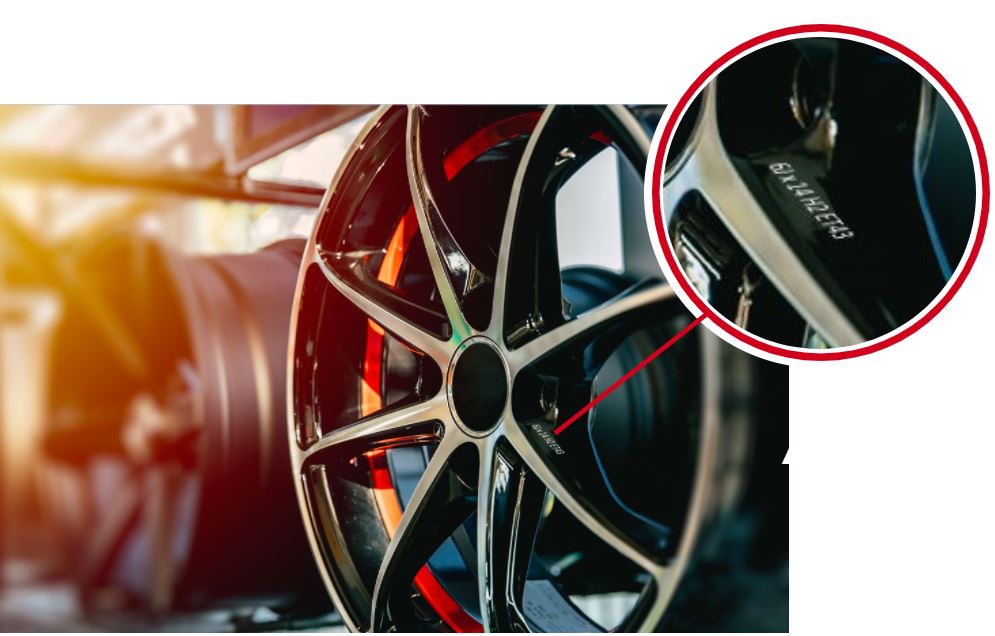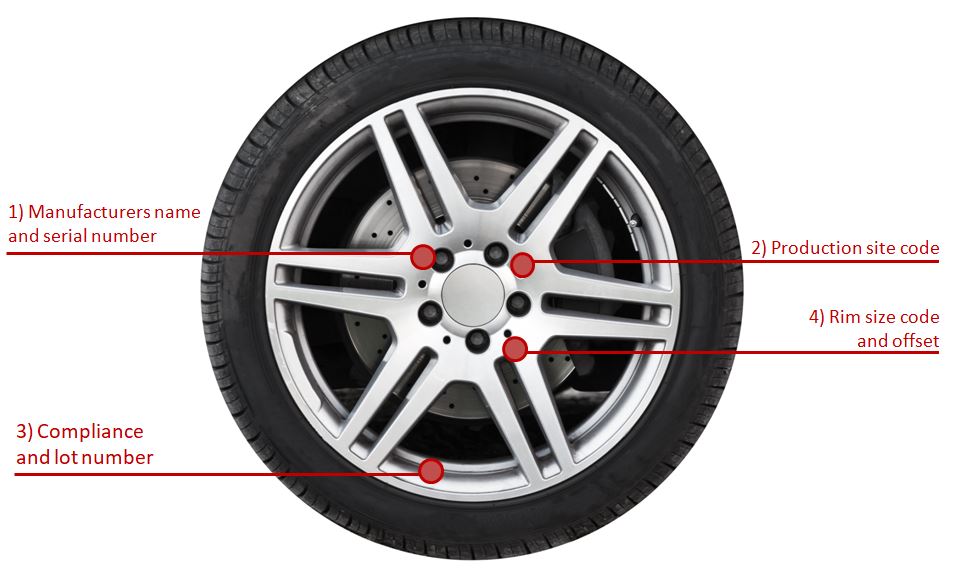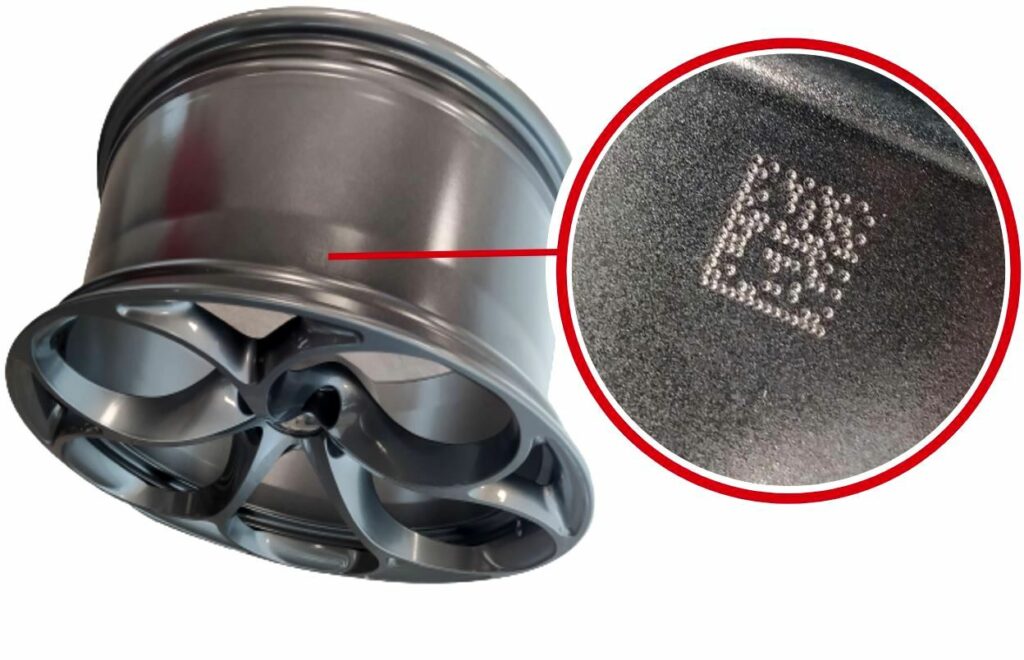
One of the most important applications for industrial marking in the automotive segment is undoubtedly car rims coding. There is no doubt about the importance of the rim quality in terms of driving safety. Steel or alloy, it doesn’t matter, each rim must guarantee maximum vehicle safety in all road and weather conditions. Industrial marking plays a key role in guaranteeing both the driver and the rim manufacturer himself. The traceability of a wheel is fundamental: the markings on the component allow to trace the manufacturer name, but also to verify the quality of the materials, the compliance with current regulations and the absolute compatibility with the car model.

Each rim must be marked in different points and with different codes:
6J x 14 H2 ET43
Where:
| Marking | Vehicle types |
| A | For bicycles, motorcycles, scooters, semi-heavy vehicles, heavy vehicles, forklifts. |
| B | Standard cars : (rim width: 6 inches) |
| D | For bicycles, motorcycles, scooters, semi-heavy vehicles, heavy vehicles, forklifts. |
| E | Semi-heavy vehicles, heavy vehicles |
| F | Heavy vehicles |
| G,H | Heavy vehicles |
| J | Standard cars |
| JJ | 4×4 |
| P,K | Classic cars |
| S,T,V,W | Compact cars |
When purchasing a car rim it is necessary and mandatory to respect the rim channel profile compatible with the vehicle and tires.
The H2 marking, at last, is the rim cup profile type.
How can we mark car rims?
For all types of marking above, the most used technology is dot peen or micro-percussion. The dot peen markers allow, through a tip of different sizes to engrave with extreme precision small codes on the rims surface even in hard-to-reach places, so as not to compromise the aesthetics of the rim itself. Other possible technologies are scribe marking or laser technologies, but are less suitable for these kinds of coding.
There are also other types of non-mandatory marking, such as datamatrix codes used in production to trace the product throughout the production process.

 There is also a third type of marking for rims, the one used to personalize the product. Personalization is becoming increasingly popular also in the automotive field, since the number of consumers who want unique and customized products is growing and growing. Decorations and logos are very common in this type of marking. In this case, being a typically aesthetic type of marking, the best technology is laser technology.
There is also a third type of marking for rims, the one used to personalize the product. Personalization is becoming increasingly popular also in the automotive field, since the number of consumers who want unique and customized products is growing and growing. Decorations and logos are very common in this type of marking. In this case, being a typically aesthetic type of marking, the best technology is laser technology.
Why to chose Automator Marking Systems?
Automator Marking Systems was funded in 1940 and is focusing 100% on Industrial Marking technologies: we can provide all kinds of Industrial Marking solutions: not only lasers, dot peen or roll machines, but also scribe markers, hot foil and impact machines, presses and chem etch kits. We have always the best solution for your marking need.